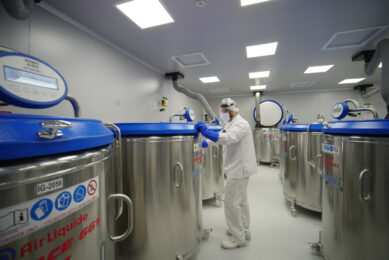New phytase now launched in Europe

Following approval by the DG-Sanco Standing Committee on the Food Chain & Animal Health (Animal Nutrition) in their February meeting, AB Vista has launched its next generation E.coli phytase product, Quantum Blue, into the European market.
Registered for all poultry (broilers, layers, turkeys, breeders and other minor species) and all pigs (piglets, weaners, growers, finishers and sows), Quantum Blue delivers benefits – including more effective phytate destruction – that have been confirmed in university and commercial trials across the globe.
First launched in the US in January 2012, it has provided significant improvements in formulation costs, feed efficiency and return on investment for AB Vista customers throughout the US, South America and Asia.
“Estimates suggest the anti-nutritional effects of phytate could be costing the industry as much as €2 billion/year in lost performance, and that the potential still to be captured from near complete phytate destruction is as high as €5/tonne of feed manufactured,” states Ari Kiviniemi, AB Vista’s global sales director.
“Reclaiming this loss was a key driver during its development, which from the outset was specifically engineered to be intrinsically thermostable, survive the gastrointestinal tract and rapidly and extensively degrade phytate.”
A composite of six broiler superdosing trials using Quantum Blue showed an average four point improvement in bodyweight-corrected feed conversion, equivalent to a cost saving of €4-6/tonne of feed. Nineteen pig trials using control diets adequate in all nutrients, including phosphorus, demonstrated improved average daily gain in 16 of the trials (84%) and feed conversion efficiency in 14 (74%) – results directly attributable to phytate elimination by Quantum Blue.
“Quantum Blue breaks down phytate faster and more completely than any previous product on the market,” adds Dr Rob ten Doeschate, AB Vista’s Technical Director for EMEA. “It does this by delivering higher levels of activity at the low pH found in the stomach, continuing to degrade phytate even at low concentrations, and reaching this site of action intact and available thanks to its ability to withstand higher temperature feed processing.”











